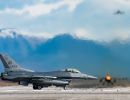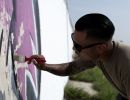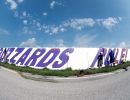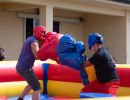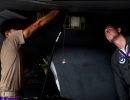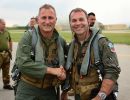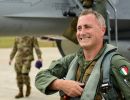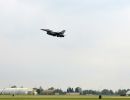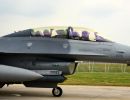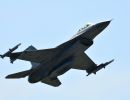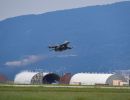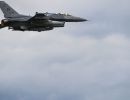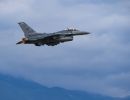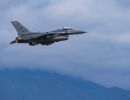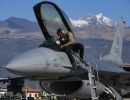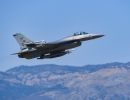
David Sarvai
510th Chronology
- 1 Mar 1943 Upon activation, the squadron drew 14 officers and 60 enlisted men from an existing squadron at Drew Field, Fla. Several men departed immediately for Nashville, Tenn., to demonstrate A-24 Dive-bombing techniques; others began dive-bombing and gunnery training
- 1 Apr - 1 May 1943 Squadron trained for two weeks at the AAF School of Applied Tactics, Orlando, Fla., and then at Gainesville, Fla., on maneuvers
- 1 May - 13 Sep 1943 Trained in A-24s and after August, in P-39s. Took part in aerial demonstrations at Maxton, NC, Sarasota, Fla.l, and Langley Field, VA. Strength increased to 290 men (278 enlisted and 12 officers)
- 13 Sept 1943 - 25 Jan 1944 Operated from Walterboro Army Air Field, SC, in advanced dive and skip bombing, ground and aerial gunnery, and ground training
- 17 - 21 Oct 1943 Simulated combat against a Navy landing force in the area of Langley Field, VA
- 12 Nov 1943 First casualties. Two pilots killed when their P-39s collided during training maneuvers
- 20 Nov 1943 Converted to P-47 aircraft
- 1 - 26 Jan 1944 Flew numerous escort and intercept missions from home field and Bushnell field, FL, operating for first time under complete guidance of ground controllers
- 26 Jan 1944 Flying training stopped. Unit began preparing for overseas move
- 14 - 15 Feb 1944 Moved to Camp Shanks, NY, for final overseas processing
- 27 Feb - 6 Mar 1944 Transported to Liverpool, England, aboard S.S. Mauretania
- 7 Mar - 10 Apr 1944 Aircrews trained at Christchurch, England, to familiarize themselves with Ninth Air Force procedures
- 11 Apr 1944 First operational mission -- a fighter sweep over the northwest coast of France
- 11 Apr 1944 - 8 May 1945 World War II combat missions included fighter sweeps, escort, dive-bombing, strafing, patrolling, and ground support missions. Lost about 20 aircraft as result of enemy action. Claimed Destruction
- 15 May 1944 First loss on a combat mission: pilot bailed out near Breskens, Holland, when his P-47 lost power
- 6 - 10 Jun 1944 Flew patrol over English Channel during the Normandy invasion
- 10 - 30 Jun 1944 Flew Dive-bombing, skip bombing, armed reconnaissance, and strafing missions in the beachhead area
- 10 Jun - 5 Aug 1944 As an element of IX Tactical Air Command, the 510th supported elements of the US First Army
- 20 Jun 1944 First encounter with an enemy plane. The Fw 190 was frightened away with no exchange of gunfire
- 22 Jun 1944 Three Me 109s were encountered in the Cherbourg area, one was shot down. One P-47 collided with the enemy plane and was lost. Lt. Boleslaw Kociencki became the first member of the 510th killed in action
- 22 Jun 1944 An advance echelon departed Christchurch to establish a new squadron facility in the invasion area, at Picauville, France
- 29 Jun 1944 Lt. Arthur F. Williams was killed, and two other squadron pilots severely injured, by an exploding bomb. A plane of another unit had crashed on take-off, and the officers were attempting to keep civilians away from the danger area
- 12 Jul 1944 Squadron began operating from Picauville
- 25 Jul 1944 When one P-47 had an armed bomb hung under it's wing and could not shake it loose, another 510th pilot eased up and nudged the bomb loose with his plane's wing tip
- 27 Jul 1944 Lt Col B.F. Parcell, Squadron Commander, was killed while flying armed reconnaissance near Coutances, France. Injured by the flak which crippled his plane, the officer could not jump
- 5 Aug1944 - 8 Feb 1945 As an element of XIX Tactical Air Command, the 510th supported elements of the US Third Army
- 16 Aug 1944 An advance party moved to St. Dizier, France, to establish a new squadron facility
- 11 Sep 1944 All squadron aircraft moved to St. Dizier
- 12 Sep 1944 One P-47 shot down during a general dogfight with 20 me 109s. Six of the enemy planes went down
- 22 Sep 1944 Used napalm bombs for the first time
- 8 Oct 1944 Cooperated with the XII corps east of Nancy, breaking up a projected counter-attack by striking a column of enemy vehicles and several troop concentrations. The corps reported that these attacks made possible to capture of 2,500 German prisoners with practically no Allied losses
- 17 Nov 1944 Capt C.A. Appel, Squadron Commander, was shot down over Berthelmingen while on a strafing mission. He was seen to bail out over enemy territory
- 19 Jan 1945 Maj C.V. Knisley, Squadron Commander, was shot down by flak over Tandel, on the Luxembourg-German border. He jumped at about 50 feet, but his parachute did not have time to open
- 5 - 8 Feb 1945 Moved to Ophoven, Belgium, on very short notice
- 8 Feb - 8 May 1945 As an element of XXIX Tactical Air Command, the 510th supported elements of the US Ninth Army
- 16 Feb 1945 On missions, the 510th netted 50 locomotives, 94 freight cars, 10 passenger cars, 6 motor transports, 2 car sheds, and 1 switch tower destroyed, plus a large number of the same objectives damaged. One plane was shot down by flak over Solinger, Germany. Lt N.C. Vogel was captured
- 8 Mar 1945 After attacking barges on the Rhine River and barrage balloons over German cities, the 510th encountered about 20 Me 109s and some Fw 190s. Three enemy planes were destroyed and one damaged at the cost of one damaged P-47
- 23 - 27 Apr 1945 Moved to Kitzinger, Germany
- 8 May 1945 Last WWII mission was an air patrol over prisoner of war camp
- 13- 14 May 1945 Moved to a field at Straubing, Germany, most personnel airlifted in a C-47 the 510th had acquired a few days earlier. The grass airstrip, hangers, and other buildings at the field were in excellent condition
- 6 Jul 1945 Moved to Reims, France, on orders to proceed to the pacific area about Sep 1945. Many personnel remained at Straubing and were absorbed in another unit
- 25 Aug 1945 Movement orders were changed, and the 510th was directed to return to the US for inactivation. Personnel strength had declined to a small number
- 15 - 26 Oct 1945 Returned to US aboard USAT George Washington
- 27 Oct 1945 Inactivated at Camp Kilmer, NJ
- 1 Dec 1952 Activated at Godman AFB, KY, assuming personnel and F-47's of a national guard squadron being released from active duty
- 17 Apr 1953 Moved to Langley AFB, VA, and immediately began converting to F-84 aircraft
May 1953 - Dec 1954 Participated in numerous joint exercises and maneuvers with Army Forces; flew aerial demonstrations, fly-bys, and practice bombing and gunnery missions in many parts of the nation - 24 Jan - 25 Feb 1955 Deployed to George AFB, California to Participate in project "Tea Pot"
- 1 Feb - 1 Apr 1955 Staged from George AFB, CA, operating over the Nevada Test Site and Camp Mercury, NV, during atomic testing
- 9 Mar 1955 Lt Col Robert R. Scott, Squadron Commander, established a new speed record for a non-stop flight from Los Angeles to New York. Refueled in the air twice, the F-84F Thunderstreak made the 2,445-mile trip in 3 hours, 44 minutes, and 53 seconds, averaging 649 miles per hour
- 1 May 1955 Demonstrated Low Angle Bombing techniques at Eglin AFB, FL, in the first large public demonstration of this procedure
- Jul 1955 Four major accidents cost the 510th three F-84Fs and one pilot. All planes were temporarily grounded for a week until mechanical problems were investigated
- 28 Mar - 30 Apr 1955 Bombing and gunnery practice at Wendover AFB, Utah
- 7 - 10 May 1956 Planes were deployed to Bermuda and back during a training exercise. Flew 58 sorties, hitting 38 simulated targets, during the test of readiness and mobility
- 29 Sep 1956 - May 1957 Converted to F-100D Supersabre aircraft
- 1 Jul - 10 Aug 1957 Operated from Seymour-Johnson AFB, NC, while Langley AFB's runways were being repaired
- 6 Jan 1958 Began preparing for inactivation
- 15 Apr 1958 Strength reduced to 1 officer and 1 airman
- 9 Apr 1959 Activated at Clark AB, Philippine Islands, assuming personnel and F-100 aircraft of an inactivated unit. Squadron mission was to help provide air defense of the Philippines and to conduct contingency operations and maneuvers throughout Southeast Asia. Became immediately involved in support of a fighter weapons conference of 11 Southeast Asia nations, sponsored by the Philippine Air Force and Thirteenth Air Force, which commenced 24 April and involved two weeks of conferences and exercises
- 18 Jun 1959 Lost an F-100 when it went into a spin during a training mission over Crow Valley bombing range, P.I. The pilot could not regain control, and received lacerations and a spinal injury while ejecting
- 1 - 8 Jul 1959 Deployed at Chai-Yi Air Base, Taiwan. Flew 309 training sorties
- 2 - 12 Nov 1959 Deployed at Chai-Yi AB, Taiwan. Flew 186 sorties on dive and skip bombing, strafing, and rocketry missions, as part of a mobile strike force exercise
- 8 Jul 1960 One F-100 and pilot were lost in a crash which occurred during a skip-bombing run on Crow Valley Bombing Range, P.I.
- 1 - 5 Mar 1961 Six F-100s support an exercise in Thailand, operating from ban Takhli
- 1 Apr - 30 Jun 1961 Part of the 510th Squadron was deployed at Tainan AB, Taiwan
- 16 Apr - 18 Jun 1961 Six F-100s were deployed at Don Muang AB, Thailand
- 11 May - 8 Jun 1962 Entire squadron deployed at Bangkok and Takhli AB, Thailand, due to Pathet Lao insurgent attacks near the northern border of Thailand, from Laos
- 19 - 29 Sep 1962 Four planes, nine crews, and ground crews were deployed at Tengah AB, Singapore, hosted by RAF squadrons
- 20 Nov 1962 Two F-100s of the 510th were lost and one pilot was killed in a collision during night formation training
- 21 - 26 Feb 1963 Seven planes, nine crews, and ground crews were deployed at Kung Kuan AB, Taiwan, in support of a joint US-Chinese Nationalist exercise
- 18 - 27 Oct 1963 Deployed 8 planes and 10 aircrews at Kung Kuan AB, Taiwan, to participate in another Chinese Nationalist-US joint exercise
- Jan - 15 mar 1964 Prepared to move to US but remained on combat ready alert status
- 16 - 18 mar 1964 Personnel granted extensive leave. Many new men joined squadron, and general training was conducted to meet new wing's requirements
- 1 May - 30 Jun 1964 Aircrews of the 510th spent 1,777 man-days TDY on nine separate commitments, supporting exercises and general operations in Thailand, Laos, and various parts of the US
- 5 - 21 Aug 1964 Six planes and aircrews (joined later by three more) were deployed with a Composite Air Strike Force, going first to Clark AB, PI, then to Takhli AB, Thailand, during the Gulf of Tonkin Crisis
- 4 - 11 Sep 1964 Remaining aircrews deployed to Nellis AFB, NV, for weapons certification, qualifying in strafing and in delivery of napalm and special weapons
- 2 - 5 Oct 1964 Operated from Cannon AFB, NM, during threat to England AFB by Hurricane Hilde
- 15 Oct - 15 Nov 1964 Supported an Army exercise at Fort Leonard Wood, MO
- 29 Nov - 14 Dec 1964 Deployed at McCoy AFB, FL, for night qualification training in low level navigation, bombing, and strafing
- 19 - 21 Apr 1965 Placed third in TAC fighter competition at Eglin AFB, FA, dropping napalm and 750-pound bombs in 12 sorties
- 5 - 7 May 1965 Squadron (less aircraft) deployed to Clark AB, PI, where it received 18 F-100s left there by another TAC rotational unit.
- 8 May - 16 Aug 1965 Operated from Clark AB, but maintained 4 planes on constant alert at Taiwan Air Stations, Taiwan, rotating crews weekly. Furnished varying numbers of planes, aircrews, and ground crews for use by other squadrons in Vietnam combat operations
- 17 - 21 Aug 1965 Returned to home base (England AFB), flying 13 F-100s back to the US
- 9 - 11 Sep 1965 Operated from Cannon AFB, NM, during threat of Hurricane Betsy in the Louisiana area
- 7 - 10 Nov 1965 Moved to Bien Hoa AB, Republic of Vietnam, with 24 F-100s
- 11 Nov 1965 Received theater indoctrination
- 12 Nov 1965 Flew first combat sorties
- 12 Nov - 31 Dec 1965 Flew 969 combat sorties. Ground fire damaged 11 planes, but none were lost
1 Jan - 30 Jun 1966 Flew 3,421 combat sorties (close support, air cover, chase, and other missions). Ground fire damaged aircraft 56 times - 13 Jan 1966 General Hunter Harris, Commander-in-Chief, Pacific Air Forces, visited Bien Hoa AB to present the 3rd Wing and it's units -- including the 510th Squadron -- the Air Force Outstanding Unit award for "exceptionally meritorious service in support of military operations" from1 May 1964 to 16 Jul 1965.
- 1 Jul - 31 Dec 1966 Flew 3,711 combat sorties. Squadron aircraft were hit by ground fire 20 times, and 2 planes were lost as a result. Many personnel rotated and were replaced by new people who had little experience with F-100s. Heavy rains of the monsoon season caused low ceilings and poor visibility. During part of July and August, and again in October, some F-100s operated out of Da Nang AB, RVN
- 12 Nov 1966 Lt Col R.E. Erickson, Squadron Commander, touched down from a combat mission, establishing a record for F-100 squadrons in Southeast Asia: 7,000 sorties and 10,000 flying hours in one year of combat.
- 8 Dec 1966 Capt. Michael L. Hyde was killed in action southeast of Can Tho while making a napalm pass. His F-100 was shot down by ground fire; Hyde was apparently hit while in the cockpit and crashed without trying to eject
- 1 Jan - 30 Jun 1967 Flew 3,614 combat sorties. Aircraft were hit 29 times by ground fire, causing the loss of 2 planes and 1 pilot. Several squadron personnel took tours as forward Air Controllers
- 12 Feb 1967 1Lt Peter J. Yeingst was killed when he was shot down by enemy ground fire on his third pass over a target southeast of Bien Hoa
- 1 Jul - 31 Dec 1967 Flew 3,339 combat sorties. Squadron planes were hit by ground fire 24 times, and 3 aircraft were lost. One pilot was killed as a result
- 19 Sep 1967 A plane of another unit exploded over Bien Hoa AB. Fragments hit and instantly killed A1C Victor M. Negron, a clerk of the 510th TFS
- 5 Nov 1967 Bien Hoa AB was attacked by a small hostile force which launched 15 rounds of 60mm mortars, resulting in only light damage
- 19 Nov 1967 Capt Duncan P. Smyly was unable to eject, and was killed, when his F-100 was shot down by enemy ground fire
- 26 Oct 1968 A metal shelter covering a 510th reventment took a direct hit from a 107mm rocket
- 1 Nov 1968 Major Arthur E. Huhn replaced Major Harrell M. Moore as Operations Officer.
- 23 Nov 1968 The 510th had an open ranks inspection conducted by Col Homer Y. Hansen, 3rd Tac Ftr Wing Commander. Col Hansen commended on the 510th TFS's high morale and excellent military bearing. It was followed by an awards ceremony
- 10 Dec 1968 The 510th went to six store configuration which surprised many a FAC
- 28 Dec 1968 Major Buddy E. Dees lost the leading edge of the wing on his last bomb pass
- 31 Dec 1968 This day, the 510th finished one year of accident free flying
- 16 Jan 1969 Major General James Stewart, Ret., and his wife, Gloria visited the 510th TFS
- 21 Jan 1969 The 510th TFS completed a 42 day period of six store configuration. Tanks were reinstalled
- 31 Jan 1969 The 510th TFS recommended for an flying safety award for the period 1 January 1967 to 31 December 1968
- 1 Feb 1969 Major David P. Proctor, Jr. assumed command of the 510th from Lt Col Robert h. McIntosh
- 23 Feb 1969 Bien Hoa Air Base under rocket and mortar attack for a total of 106 hits. The 510th TFS was spared casualties and equipment damage
- 1 Mar 1969 Major David P. Proctor, Jr. was promoted to Lt Colonel
- 1991 510th Participates in Operation DESERT STORM
- 1991 510th participates in Operation PROVIDE COMFORT
- 12 Apr 1993 - 27 Feb 1994 510th participates in Operation DENY FLIGHT flying over 1,700 sorties in the A-10 while deployed to Aviano AB, Italy
- 27 Feb 1994 512th Fighter Squadron redesignated to 510th Fighter Squadron
- 4 Aug 1994 510th Fighter Squadron is Reactivated at Aviano AB, Italy with F-16C/D
- 28 Sep 1994 - 20 Dec 1995 Lt Col Gary "Gumby" West, Squadron Commander, flies maiden flight during the F-16 Squadron's Operation DENY FLIGHT rotation
- Dec 1994 Squadron achieves full Precision Guided Munitions capability
- 29 Aug - 20 Sep 1995 510th participates in Operation DELIBERATE FORCE flying 209 combat sorties for 657 flying hours, delivering 214 tons of PGM
- Dec 1995 510th participates in Operation DECISIVE EDGE flying 502 sorties for 1254.3 flying hours
- 21 Dec 1996 - Present 510th participates in Operation DELIBERATE GUARD
- Apr 1997 510th participates in Operation SILVERWAKE flying 60 sorties. Intercepted MiG-17 and 3 Super Glebes. The only USAF Fighter Squadron to participate in NEO of Albania
- Jun 1998 510th led Operation DETERMINED FALCON. Planned, led and supported the 13 nation, 82 aircraft force demonstration over Albania and Macedonia. Simultaneously supported Operation DELIBERATE GUARD mission
- 24 Mar - 10 Jun 99 510th participates in Operation ALLIED FORCE flying 1327 sorties hitting 161 fixed targets, 32 tanks, 56 APCs and other vehicles, 23 artillery and AAA pieces, 18 aircraft, and 25 cows
510th Strategic Missile Squadron (SMS)
Among the many units that make up the military's nuclear triad, the 510th Strategic Missile Squadron is truly unique. The squadron's slogan, "When We Speak the World Listens," is almost literally true.
The 510 SMS is the only squadron in the air force operating the Emergency Rocket Communications System (ERCS). ERCS is a missile-based method for ensuring communication amount all SAC's forces in a wartime environment.
ERCS, which is in addition to the squadron's traditional nuclear capabilities, was added to the squadron's responsibilities on Aug 29, 1967. ERCS crew members are expected to maintain proficiency in both traditional Emergency War order and weapon-system operating practices and in ERCS procedures--a dual responsibility that makes 510 SMS personnel the only line crew members qualified to pull alerts anywhere in the wing.
ERCS, however, is not the squadron's only unique feature. Oscar-01, the 510 SMS Command Post, is the only operational launch control facility actually on an Air Force base. With that unique location come thousands of visitors each year--among them top-ranking government officials, celebrities, and the first Soviet military delegation ever to visit Whitman.
The 510th began as a bombardment squadron that participated in World War II, earning two Distinguished Unit Citations. This tradition of excellence continued when the 510 SMS became fully operational on Jun 30, 1964.
The squadron has earned six Outstanding Unit Awards and three Eighth Air Force Golden Missile Awards--two the first consecutive awards ever given. Additionally, both the 1988 and 1989 SMW top missile crews were 510thers; the 1988 crew was named best in SAC. The 510 SMS is worth listening to!
510th Emblem & Significance
Emblem
On a shield per bend royal purple and black between a bendlet white, a falcon's head, erased, of the last, shaded light blue, eye and pupil indicated in black; his beak open; and issuing from base a demi sphere light blue, outline and grid lines white; centered on the bendlet an atomic symbol of three entwined white elliptical rings around a red atom; the perimeter of the rings marked with six smaller atoms; three lightning bolts radiating downward from the symbol over the sphere all white; a diminutive border around the shield of the last. Approved 14 Feb 1957.
Significance
The field of the teutonic shaped shield, is partitioned by an honorable heraldic bend with the squadron colors, royal purple and black. The falcon's head symbolically depicts the squadron as a swift, fierce deterrent force; the atomic symbol denotes the ability to employ weapon systems of progressively advance design, the lightning, striking the earth at widely separate points, indicates the capability of powerful attack worldwide. The white bendlet and border indicates that this great power will be used wisely and with purity of thought to protect, preserve, and establish peace and liberty always.
510th Decorations
Decorations
- Distinguished Unit Citation: France, 24 Sep 1944
- Cited in the Order of the Day, Belgium Army: 06 Nov - 30 Sep 1944
- Air Force Outstanding Unit Award: 01 Nov 60 - 30 Jun 61
- Air Force Outstanding Unit Award: 01 May 64 - 16 Jun 65
- Presidential Unit Citation: Vietnam, 08 Jun 66 - 16 Apr 67
- Air Force Outstanding Unit Award with Combat "V" Device: 31 Jan - 05 Mar 1968
- Air Force Outstanding Unit Award with Combat "V" Device: 01 Aug - 16 Nov 1968
- Republic of Vietnam Gallantry Crosses with Palm: 25 Nov 65 - 19 May 69
- Presidential Unit Citation: Vietnam, 06 Mar 68 - 32 Jul 69
- Republic of Vietnam Gallantry Crosses: 01 Apr 66 - 15 Nov 69
- Air Force Outstanding Unit Award: 01 Aug - 16 Nov 69
- Air Force Outstanding Unit Award: 01 Jul 79 - 30 Jun 81
- Air Force Outstanding Unit Award: 01 Jul 81 - 30 Jun 83
- Joint Meritorious Unit Award: 12 Apr 93 - 31 Oct 95
- Joint Meritorious Unit Award: 10 Apr 94 - 9 Apr 96
510th Campaigns
Campaigns
- Air Offensive, Europe 1942 - 1944
- Normandy, 1944
- Northern France, 1944
- Rhineland, 1944 - 1945
- Ardennes-Alsace 1944 - 1945
- Central Europe 1945
- Air Combat, EAME 1941-1945
- Vietnam Defense 1965 - 1966
- Vietnam Air 1966
- Vietnam Air Offensive
- Vietnam Air Offensive, Phase II, 1967-1968
- Vietnam Air Offensive, Phase III, 1968
- Vietnam Air Offensive, Phase IV, 1968 - 1969
- Vietnam Air/Ground, 1968
- Tet/Counteroffensive, 1969
- Vietnam Summer-Fall, 1969
- Vietnam Winter-Spring, 1970
- Afghanistan Consolidation III, 2014
510th Stations
Stations
| 01 March 1943 | Drew Field, Florida | A-24 |
| 13 Sep 43 - 14 Feb 44 | Walterboro AAF, South Carolina | P-39 |
| 06 Mar - 22 Jun 1944 | Christchurch, England | P-47 |
| 30 June 1944 | Picauville, France | P-47 |
| 11 September 1944 | St. Dizier, France | P-47 |
| 06 February 1945 | Ophoven, Belgium | P-47 |
| 23 April 1945 | Kitzingen, Germany | P-47 |
| 14 May - 2 Jul 1945 | Straubing, Germany | P-47 |
| 25 - 27 October 1945 | Camp Kilmer, Jew Jersey | P-47 |
| 01 December 1952 | Godman AFB, Kentucky | F-48 |
| 17 Apr 53 - 1 Jul 58 | Langley AFB, Virginia | F-84 |
| 09 Apr 59 - May 61 | Clark AB, Luzon | F-100 |
| May 1962 | Bangkok AB, Thailand | F-100 |
| March 1964 | England AFB, Louisiana | F-100 |
| Nov 65 - Oct 69 | Bien Hoa AB, Vietnam | F-100 |
| Oct 78 - Mar 92 | RAF Bentwaters, England | A-10 |
| 14 January 1993 | Spangdahlem AB, Germany | A-10 |
| April 1994 - Present | Aviano AB, Italy | F-16 |
The New beginning of Aviano Air Base, Italy
The 31st Fighter Wing, 555th Fighter Squadron, and 510th Fighter Squadron have forged a proud tradition of excellence—excellence in the air, on the ground, at the front and behind the lines, in operations, in maintenance, and in support. These three squadrons share a common history of distinct courage, heroism, and sacrifice. Their glory is now ours.
Our story begins 36 years before the United States Air Force was established, even before many of the men you are about to meet were born…in the cradle of the Italian Air Force—Aviano.
In 1920, Aviano was officially named Aeroporto Pagliano e Gori, to honor Capt. Maurizio Paglian and Lt. Luigi Gori. In their Caproni biplane, they made an unauthorized, but successful raid on the Austrian naval yards in Pola during World War I. They were killed a year later flying a strafing mission.
As Hitler was secretly rebuilding Germany’s Air Force, selected pilots came to Aviano for flight instruction.
Laster, units of the German Luftwaffe and Italian Air Force would be based here during World War II.
But as Italian pilots feverishly train for battle…the men of the 510th Fighter Squadron are also undergoing flight instruction in preparation for war.
Though the Buzzards would fly many aircraft, it was Alexander Cartveli’s patented P-47 Thunderbolt that would bring the Nickel Dime Squadron World War II fame.
The 510th arrived at Christchurch, England in March, 1944. Their mission—support allied ground forces and destroy enemy material. Of the 122 pilots, 18 would be killed in action and 32 would be shot down. 7 became prisoners of war. Howard Curran would become their only ace.
Pilot Bill Simpkins: "I joined in the first week of May. There wasn’t much good action until "D" Day. That’s when all hell broke loose. The people upstairs in command turned us loose and we did our bit."
Simpkins flew 101 missions. Buddies Jimmy Pelletier and George Quinlan were killed in action.
On "D" Day morning 16 Thunderbolts took off from the wiremesh runway at Christchurch. The planes were equipped with auxiliary fuel tanks, 500 pound bombs, and 450 rounds of 50 caliber ammo for each of eight guns.
Michael O’Reagan survived a bail-out, but broke both legs. While spending 6 months as a prisoner of war in a German hospital he went from 147 to 86 pounds. "He was a survivor and one hell of a good pilot."
The 510th's first wartime commander Major Bruce Parcell. He and his squadron synchronized their watches at a predawn briefing. Mission: the St. Lo bombing allowing ground forces to break out o f Cherbourg. Two missions later, Parcell’s plane was hit by heavy flak on a strafing run and he was killed.
The Nickel Dime Squadron moved to Picauville, France. They lived in tents near the landing strip. The 826th Engineering Squadron bulldozed a thirty eight hundred foot clearing through an apple orchard, covered it with tarpaper, and had it operational in under 5 days.
Commander Ralph Jenkins now led the 510th and set a record of 130 missions. His Thunderbolt was painted by assistant G-2 clerk Sgt. Lynn Trank.
Buzz Norr finished the war with 4 aerial victories in 3 days and received the silver star. Trank painted Norr a Pilot’s Dream. He painted all the planes—except for Bill Simpkins’. Once recording 57 flak holes on one mission—Simpkins figured it was a waste of time.
While in Normandy the 510th constructed an officers’ Club from latrine screens and artillery shell crates. Flak Haven was reactivated in Bentwaters, England in the 1980s.
The squadron flew 4,861 missions. In 11 months they shot down 107 enemy aircraft, and destroyed 199 tanks, 2,092 train cars, 264 gun emplacements, 12 bridges, and 449 buildings.
Mechanics who worked in winter with numbed hands on delicate engine changes, paper shufflers who specialized in office machinery, cooks, cops, and communicators were just as critical to victory as the steel-nerved pilots.
One historic tribute to the singular accomplishments of the 510th reads: "I feel that especial emphasis should be placed on the truly heroic action of the 510th Fighter Bomber Squadron which on September 24, in support of the 4th Armored Division, took off in unflyible weather, uncertain whether or not they could ever land. This unit intervened at the critical moment of a tank battle, and by their skill and daring very materially assisted in the defeat and destruction of the enemy." Signed George S. Patton, Jr., Lt. General U.S. Army, Commanding.
The World Famous Highly Respected 555th Triple Nickel Tactical Fighter Squadron moves to Udorn, Thailand February 1966. They will become the world’s largest distributor of MiG parts in Southeast Asia.
On leaving his wife Capt. Dean Weihe says: "Now I shall know what kind of man I really am. I’m a poor student, struggling athlete, but a fifteen hundred miles per hour and 6,000 feet, or slashing towards a target, I’m an outstanding fighter pilot and that will keep me alive."
Participating in Air-to-Ground and Air-to-Air missions between April 23 and May 12, 6 Nickel crews down 6 enemy planes. The 555th became the first Ace Squadron in Southeast Asia—just 3 months after arrival.
Now based at Ubon, Thailand, pilot Lt. Jerry Jameson was a one-month veteran. Flying through MiG Alley near Hanoi, he was spotted by 5 enemy MiGs. Diving 5000 feet in mere seconds he and… Lt. Doug Rose shot down one enemy plane with a Sidewinder missile. For Jameson and Rose there remain 11 months and at least 85 missions with the Triple Nickel. But this time they win.
LTC Jess Allen, 555th commander, led the first strikes against North Vietnamese air fields in April 67.
By June the Nickel was a Triple Ace Squadron with 15 kills. Each star on their flag records a downed MiG.
World War II ace Col. Robin "Stash" Olds: "We out-flew, we out-shot, and we out-fought them." Olds celebrates the first of 4 kills, 2 as a Nickel member, during Operation BOLO January 1967. Later he would command the 8th Tactical Fighter Wing Wolfpack, recording more than 100 missions over North Vietnam. Olds would retire a brigadier General.
Pilot Richard Pascoe: "The MiG was rolling back and forth. I was low and he couldn’t see me. As he pulled up I had a perfect line on his silhouette." It was the second kill for Pascoe and copilot Capt. Norman Wells.
Night bombing attacks against North Vietnam begin in October. Capt. Bill Gordon and Lt. Jim Monsees down their first MiG. While in Ubon the 555th downed 14 more aircraft making them the only Quad Ace Squadron in Southeast Asia.
Capt. Don Logeman and Lt. Fred McCoy downed a Mig-17 with an Aim-7 missile.
McCoy then presented a plaque from the Wolfpack’s mustached men to Bob Hope during his annual Christmas tour.
"Once Green Always Green," the traditional Nickel toast to new commander, Doc Dougherty, April 68. Traditional drink, Green Death: one shot each of vodka, creme de menthe, and Jeremiah Weed.
The 555th returns to Udorn and Capt. William Gordon sends a personal message from his hometown of Wethersfield, Connecticut.
Tom McInerney and back-seater Roger Gossic refuel during a mission. Lt. General McInerney would later head the Alaskan Air Command.
Nickel pilots averaged two thousand five hundred flying hours. No other Squadron in Southeast Asia amassed a record to equal the 555th. They adopted the acronym W.F.H.R. (World Famous Highly Respected) to denote the pride and camaraderie among Triple Nickel members. Having 3 nickels in your possession at all times a requirement.
Triple, nicknamed Trip, was born under the aircrew quarters and adapted by the 555th as their mascot. She slept in the briefing room bookcase and rode in the commander’s jeep. Trip spent many hours escorting crews to their planes and greeting them on their return.
The two names most often associated with the Nickel and Pilot Ritchie and his Wizzo DeBellvui.
5 Aces emerged from the Vietnam conflict. Capt. Steve Ritchie was the first. He bagged his 5th MiG while passing canopy to canopy at almost supersonic speed.
The 555th was the only squadron to produce 2 aces. Capt Chuck Bellevue was not only the highest scoring ace, but the only Weapons System Officer and GIB—guy in back—to attain that honor.
In a wild dogfight with 4 MiGs Roger Locher’s plane was hit after downing his 3rd MiG. He ejected but his pilot, Major Bob Lodge, went down with the plane. Locher survived for 23 days behind enemy lines.
Morrison and Mravak weren’t so lucky. Along with many other Nickel members they made the ultimate sacrifice.
The 555th was awarded the Hughes Trophy in January 1974, only the 2nd tactical squadron to receive that honor. Recognized for 2 Air Force crosses, 19 silver stars, 100 Distinguished Flying Crosses, and 288 Air Medals in 1973 alone, the 555th would end the war with 40 enemy kills. Their achievements were made possible by the sustained maximum effort of maintenance and support units. Nickel members accepted the Hughes Trophy in tribute to all fighter units in Southeast Asia, with a special dedication to the memory of those men who gave their lives.
This story that began in Aviano does not end here—but begins a new chapter as the 31st Fighter Wing stands poised, ready to make new history.
510th Commander's Lineage
| Date | Station | Photos | Commander | Aircraft |
| March 1943 | Drew Field, FL | 1Lt G.R. Doughty | A-24 | |
| September 1943 | Walterboro AAF, SC | Maj B.F. Parcell | P-39 | |
| March 1944 | Christchurch, England | Maj B.F. Parcell | P-47 | |
| June 1944 | Picauville, France | Capt R.C. Jenkins | P-47 | |
| September 1944 | St. Dizier, France | Capt C.A. Appell | P-47 | |
| November 1944 | St. Dizier, France | Capt C.V. Knisley | P-47 | |
| January 1945 | St. Dizier, France | Lt Col R.C. Jenkins | P-47 | |
| February 1945 | Ophoven, Belgium | Lt Col R.C. Jenkins | P-47 | |
| April 1945 | Kitzingen, Germany | Lt Col R.C. Jenkins | P-47 | |
| May 1945 | Straubing, Germany | Lt Col R.C. Jenkins | P-47 | |
| October 1945 | Camp Kilmer, NJ | Lt Col R.C. Jenkins | P-47 | |
| October 1945 | Deactivated | |||
| December 1952 | Reactivated | |||
| December 1952 | Goodman AFB, KY | Maj R.S. Peterson | F-48 | |
| December 1952 | Goodman AFB, KY | Jam W.H Fletcher | F-48 | |
| April 1953 | Langley AFB, VA | Lt Col R.R. Scott | F-84 | |
| June 1956 | Langley AFB, VA | Maj D.W. Allen | F-100 | |
| April 1958 | Langley AFB, VA | Maj M.T. Johnson | F-100 | |
| April 1959 | Clark AB, Luzon | Col C.E. Dannacher | F-100 | |
| April 1959 | Clark AB, Luzon | Maj J.P. Anderson | F-100 | |
| June 1959 | Clark AB, Luzon | Lt Col S.P. Ham | F-100 | |
| July 1959 | Clark AB, Luzon | Lt Col D.E. Miller | F-100 | |
| June 1961 | Clark AB, Luzon | Maj J.F. Martin | F-100 | |
| July 1961 | Clark AB, Luzon | Lt Col L.J. Pickett | F-100 | |
| May 1962 | Bangkok AB, Thailand | Lt Col W.E. Charlson | F-100 | |
| March 1964 | England AFB, LA | Maj A.S. Nelson | F-100 | |
| November 1965 | Bien Hoa AB, Vietnam | Maj H.M Christiansen | F-100 | |
| October 1966 | Bien Hoa AB, Vietnam | Lt Col R.E. Erikson | F-100 | |
| March 1967 | Bien Hoa AB, Vietnam | Lt Col A.W. Groves | F-100 | |
| November 1967 | Bien Hoa AB, Vietnam | Lt Col L.G. McBride | F-100 | |
| August 1968 | Bien Hoa AB, Vietnam | Lt Col R.H. McIntosh | F-100 | |
| February 1969 | Bien Hoa AB, Vietnam | Lt Col D.P. Proctor Jr. | F-100 | |
| September 1969 | Bien Hoa AB, Vietnam | Maj R.M. Clements | F-100 | |
| October 1969 | Bien Hoa AB, Vietnam | Lt Col W.I. Chenault | F-100 | |
| November 1969 | Deactivated | |||
| October 1978 | Reactivated | |||
| October 1978 | RAF Bentwaters, England | Lt Col H.W. Moss | A-10 | |
| March 1981 | RAF Bentwaters, England | Lt Col R.D. Harris | A-10 | |
| July 1982 | RAF Bentwaters, England | Lt Col G.H. Felix | A-10 | |
| June 1984 | RAF Bentwaters, England | Lt Col A.R. Hedlund | A-10 | |
| July 1986 | RAF Bentwaters, England | Lt Col J.C. Elliott | A-10 | |
| March 1988 | RAF Bentwaters, England | Lt Col L.R. Dyer III | A-10 | |
| May 1989 | RAF Bentwaters, England | Lt Col P.K. Garvey | A-10 | |
| April 1991 | RAF Bentwaters, England | Lt Col P. "Doc" Pentland | A-10 | |
| March 1992 | RAF Bentwaters, England | Lt Col Dale A. Elliot | A-10 | |
| October 1992 | Spangdahlem AB, Germany | Lt Col Thomas D. Popp | A-10 | |
| Deactivated | ||||
| April 1994 | Reactivated | |||
| April 1994 | Aviano AB, Italy | Lt Col Gary "Gumby" West | F-16 | |
| March 1996 | Aviano AB, Italy | Lt Col Edward "Easy" Rider | F-16 | |
| June 1997 | Aviano AB, Italy | Lt Col David "Face" Nichols | F-16 | |
| June 1999 | Aviano AB, Italy | Lt Col Steven "Pigpen" Schrader | F-16 | |
| April 2001 | Aviano AB, Italy | Lt Col Terrence "Shags" O'Shaugnessy | F-16 | |
| July 2002 | Aviano AB, Italy | Lt Col Mike "Fanman" Fantini | F-16 | |
| July 2004 | Aviano AB, Italy | Lt Col John "Whiskey" Walker |
F-16 |
|
| July 2006 | Avaino AB, Italy | Lt Col Adrian "Kermit" Pone |
F-16 |
|
| February 2008 | Aviano AB, Italy | Lt. Col Lance "Spike" Landrum | F-16 | |
| June 2009 | Aviano AB, Italy | Lt. Col Gregory "Spartacus" Sarakatsannis |
F-16 |
|
| June 2011 | Aviano AB, Italy | Lt. Col. Michael E. Thompson |
F-16 |
|
| June 2013 | Aviano AB, Italy | Lt. Col. Chris "DBAL" Austin |
F-16 |
|
| June 2015 | Aviano AB, Italy | Lt. Col. Jeffrrey M. "Scotch" Montgomery |
F-16 |
|
| March 2017 | Aviano AB, Italy | Lt. Col Benjaman "Skynrd" Freeborn | F-16 | |
| June 2019 | Aviano AB, Italy | Lt. Col. Daniel R. "Duece" Lindsey | F-16 |
Zaragosa Annual Spring Turkey Shoot V2
AVIANO AIR BASE, Italy (Vigileer) – There has always been competition and rivalry amongst fighter squadrons. This rivalry is one of the things that drives and motivates us – that which instills pride in our remarkable people and our phenomenal unit.
Fighter pilots are inherently competitive, and the squadrons that stand on the shoulders of these warriors and the soldiers that support them are full of enthusiasm for their duty and pride in their work.
Zaragosa Annual Spring Turkey Shoot V1
510th “Buzzards” take the 555th to School
AVIANO AIR BASE, Italy (Vigileer) – The 510th and 555th fighter squadrons held an annual spring Turkey Shoot contest During their Spain deployments. The contest involves all the pilots in the 510th and 555th in a competition to drop the most accurate bombs on a practice range. Scores are based on how close the bomb hits to a target. These are dumb bombs dropped visually, without aid from GPS or a targeting pod. The contest is designed to pit raw pilot skill and natural ability against a target on the ground. The competition is a great way to motivate pilots to enhance their war-fighting capabilities; and of course squadron pride is on the line!
























